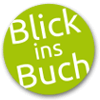With their distinctive and other-worldly appearance, runes--an ancient alphabet used to write Germanic languages--provide our only first-hand record of the customs and beliefs of peoples living on the northern fringe of the Roman Empire during a period of mass migration and momentous social upheaval. Emerging from obscure origins early in the first millennium, the runic script found new roles in Early Medieval England and Viking-Age Scandinavia, bearing witness to changing faiths, documenting the exploits of Norse settlers and mercenaries as they redrew the map of Europe, and giving us a rare window into the lives of medieval merchants in the North Atlantic.
Runes: A Concise History recounts the fascinating story of the runic script and its evolution, whilst using the information provided by runic inscriptions to trace some of the major events to shape the medieval North, from migration, settlement, and conquest to conversion and the beginnings of Old English literature. From salacious graffiti (including a rune stick mentioning the fact that 'Árni the priest wants to have Inga') and intimate inscriptions on jewelry (such as a charm on a lead plaque stating that an illness-causing dwarf is dead), to towering runestones expressing the power and prestige of Viking rulers, the stories told through runic objects offer insight into cultures on the peripheries of Europe as they came to shape the medieval world. Knowledge of runes travelled across the North Sea with Germanic tribes migrating from the Continent and the script proceeded to evolve differently in England, being used alongside the Roman alphabet for several centuries and coming to play a key role in Northumbria's Golden Age and the beginnings of an English literature. Here is the story of an extraordinary but little-known writing system that seems opaque to us yet offers a window on the wider social history of migration, settlement, and cultural exchange in pre-modern Europe.
Through six chapters focused on distinct periods, author Tom Birkett introduces the reader to some of the highlights of the runic corpus, including exciting objects only discovered in the last few years. Runes have come to increasing prominence through adaptations of Tolkien's fiction for the screen and their appropriation by the extreme right. This complex legacy of the reception and misuse of runes is an important facet of the cultural history of the script, and the final chapter brings the story of runes into the present day by addressing these many modern afterlives.
Tom Birkett is Professor of Old English at University College Cork, Ireland. He completed his D.Phil. on runes in literature at the University of Oxford, and has published extensively on the runic script, Old English and Old Norse poetry, and the reception of medieval literature. In 2016-17, he ran a major project on the perception of the Vikings in Britain and Ireland and is currently leading a project mapping the reception of the Vikings across Europe funded by the European Research Council. His research is committed to breaking down the barriers between the academy and public medievalism, and he has spent several summers sailing with the Danish crew of the reconstructed Viking ship "Sea Stallion."
 Und dann auf "Zum Home-Bildschirm [+]".
Und dann auf "Zum Home-Bildschirm [+]".











